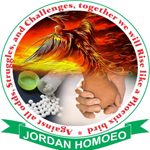SPEECH DISORDERS AND HOMOEOPATHY
Speech consist of
ü Phonation- the process of sound production
ü Resonance, intonation, the variation of pitch, and voice
Language consist of
Phonology– The manipulation of sound according to the rules of the language
Morphology– The understanding and use of the minimal units of meaning
Syntax– the Grammar or principles and rules for constructing sentences in languages
Semantics– the interpretation of meaning from the signs or symbols of communication
Pragmatics– the Social aspects of communication
Speech disorders usually includes:
- Childhood apraxia of speech
- Dysarthria
- Orofacial myofunctional disorders
- Speech sound disorders: articulation and phonological processes
- Stuttering
- Voice
Language Disorders includes:
- Language Based Learning disabilities
- Preschool Language Disorders
- Selective Mutism
Medical and Developmental conditions:
- Attention Deficit/hyperactivity disorder
- Autism
- Cleft lip and palate
- Right hemisphere brain injury
- Traumatic brain injury
An infant who isn’t responding to sound or who isn’t vocalizing is of particular concern. Between 12 and 24 months, reasons for concern include a child who:
- isn’t using gestures, such as pointing or waving bye-bye by 12 months
- prefers gestures over vocalizations to communicate by 18 months
- has trouble imitating sounds by 18 months
- has difficulty understanding simple verbal requests
Please seek an evaluation and Start Homoeopathic Treatment with Speech therapy if a child over 2 years old:
- can only imitate speech or actions and doesn’t produce words or phrases spontaneously
- says only certain sounds or words repeatedly and can’t use oral language to communicate more than his or her immediate needs
- can’t follow simple directions
- has an unusual tone of voice (such as raspy or nasal sounding)
- Is more difficult to understand than expected for his or her age. Parents and regular caregivers should understand about half of a child’s speech at 2 years and about three quarters at 3 years. By 4 years old, a child should be mostly understood, even by people who don’t know the child.
Delayed Speech:
A delay in speech development may be a symptom of many disorders, including mental retardation, hearing loss, an expressive language disorder, psychosocial deprivation, autism, selective mutism, receptive aphasia and cerebral palsy. Speech delay may be secondary to maturation delay or bilingualism.. Timely detection and early intervention may mitigate the emotional, social and cognitive deficits of this disability and improve the outcome.
Speech is the motor act of communicating by articulating verbal expression, whereas language is the knowledge of a symbol system used for interpersonal communication.In general, a child is considered to have speech delay if the child’s speech development is significantly below the norm for children of the same age. A child with speech delay has speech development that is typical of a normally developing child of a younger chronologic age; the speech-delayed child’s skills are acquired in a normal sequence, but at a slower-than-normal rate.
Speech delay has long been a concern of physicians who care for children. The concern is well founded, because a number of developmental problems accompany delayed onset of speech. In addition, speech delay may have a significant impact on personal, social, academic and, later on, vocational life. Early identification and appropriate intervention may mitigate the emotional, social and cognitive deficits of this disability and may improve the outcome.
HOMOEOPATHY AND SPEECH THERAPY:
The role of Homoeopathy and speech therapy is a vital one. Among the most important function perhaps be for children who speak late. These late starters need support and proper care that will not only help them begin talking, but also help with the psychological part of communicating late.
Along with Homoeopathy a speech pathologist will help the child to form the proper speech sounds and design a regime that will help exercise the vocal chords.
Homoeopathy literature is rich with drugs indicated for speech difficulties example: child with stammering speech would require medicine like strammonium, nux vomica, belladonna etc with individualizing symptom. Tremendous improvement is seen when speech therapy and homoeopathic medication are given simultaneously.
A CASE OF DELAYED SPEECH TREATED WITH HOMOEOPATHY FROM OUR EXPERIENCE:
Mast.jg. (in Mumbai) who was 2 and half years old came to us with the parents complaining that their child has not started speaking yet. A full case taking was done covering both clinical and homoeopathic history. There were no other medicinal cause, or secondary cause with the speech delay.
AFTER CASE PROCESSING WE ADMINISTRATED THE CONSTITUTIONAL HOMOEOPATHIC MEDICATION AND ADVICED THE PARENTS TO GET A SPEECH THERAPIST APPOINTMENT AND START SPEECH THERAPY ALONG WITH HOMOEOPATHY. TO OUR SURPRISE THE CHILD STARTED SPEAKING THE FIRST WORD WITHIN A WEEK OF ADMINISTRATING HOMOEOPATHIC MEDICATION.THE PARENTS HAVE NOT EVEN VISITED THE SPEECH THERAPIST YET. THE PATIENT STARTED IMPROVING IN SPEECH TREMENDOUSLY WITHIN 3MONTHS.
THIS CASE IS A LIVING EXAMPLE TO SHOW THE POWER OF HOMOEOPATHY OVER SPEECH DISORDERS. HOWEVER WE RECOMMEND THAT A COMBINED EFFORT OF HOMOEOPATHY AND SPEECH THERAPY IS IDEAL AND MORE HOLISTIC WAY OF APPROACH. THOUGH HOMOEOPATHY CAN ALONE FINISH THE JOB, SPEECH THERAPY WILL ENHANCE AND TEACH THE CHILD HOW TO SPEAK!
WE HAVE ALSO WITNESSED MANY AUTISTIC CHILDREN WHO WAS PREVIOUSLY TAKING ONLY SPEECH THERAPY, NOW STARTED SPEAKING AFTER STARTING HOMOEOPATHIC MEDICATION.
